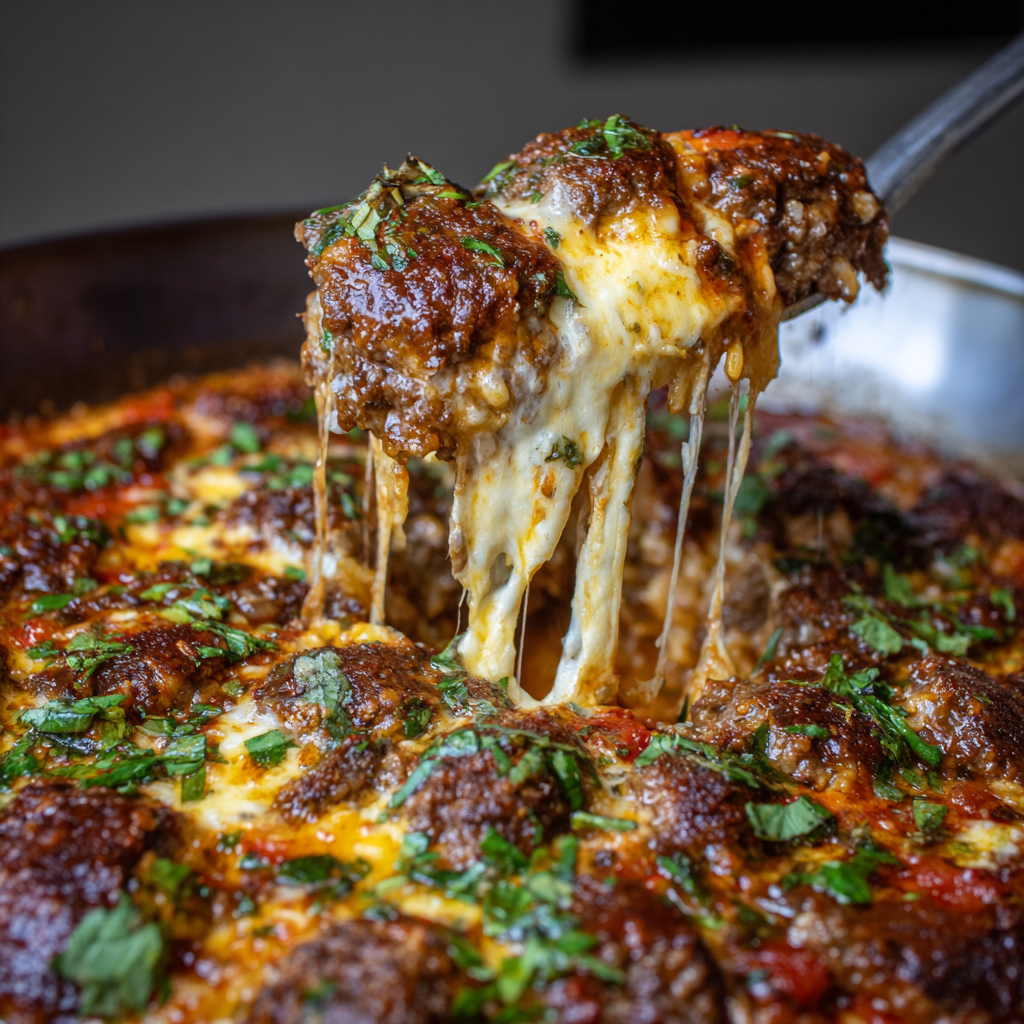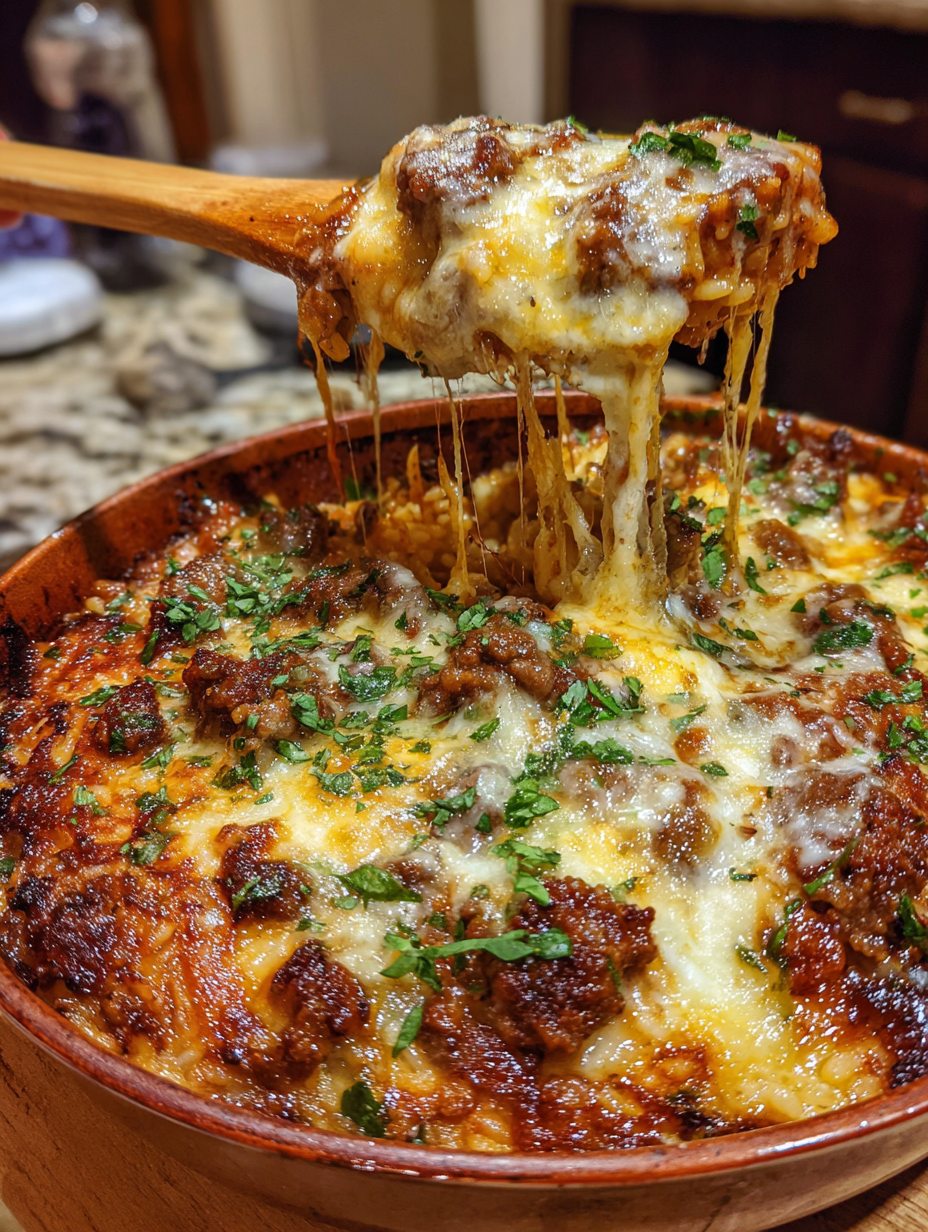 Pin it
Pin it
Beef Giouvetsi is the ultimate Greek comfort dish made for lazy Sundays or festive gatherings when you want something both homey and impressive. This version delivers meltingly tender beef tucked into a flavorful tomato sauce and lush orzo. Every bite brings a little taste of the Aegean—simple, timeless, deeply satisfying.
I made this for a big family birthday dinner the first time and it stole the show People went back for seconds and talked about it for weeks
Ingredients
- Beef chuck or stew meat: proven favorite for braising gives buttery soft results choose marbled well trimmed cuts
- Olive oil: brings that rich fruity Greek undertone cold pressed for best flavor
- Large onion: naturally sweetens the sauce and forms the base fresh and firm is best
- Garlic: brings warmth and depth look for plump bulbs
- Crushed tomatoes: form the hearty sauce use the best quality you can find
- Tomato paste: intensifies the tomato flavor and gives body to the sauce
- Beef broth: deepens savoriness homemade if you have it or choose low-sodium store brand
- Cinnamon stick and bay leaves: classic Greek flavors the cinnamon offers subtle warmth bay leaves add background fragrance
- Ground allspice: hints of sweet spice choose freshly ground for better punch
- Salt and pepper: essential for balance
- Sugar: optional but mellow if your tomatoes are quite acidic
- Orzo pasta: the little rice-shaped pasta that soaks up sauce check the cooking time
- Hot water or beef broth: keeps orzo moist during baking add more if needed
- Grated Kefalotyri cheese: a traditional salty topper Parmesan works too and has a similar sharp tang
- Fresh parsley: for bright color and a clean herbal finish choose crisp leaves
Step-by-Step Instructions
- Brown the Beef:
- Pat beef dry and season all sides generously with salt and pepper Heat olive oil in a large Dutch oven over medium-high then work in batches searing beef cubes on all sides Each piece should develop a deep brown crust before removing to a plate Searing locks in juices and adds a foundation of flavor to your stew
- Sauté the Onion and Garlic:
- After removing the beef lower heat slightly and add chopped onion Stir frequently and cook about five minutes until the onion looks translucent and is just beginning to caramelize Add the minced garlic and continue to sauté for another minute until fragrant This step ensures the aromatics are fully softened and infuse the whole pot
- Build the Tomato Sauce:
- Add crushed tomatoes plus tomato paste into the pot Stir thoroughly scraping up browned bits from the bottom Pour in beef broth then add cinnamon stick bay leaves ground allspice and a sprinkle of salt Adjust seasoning tasting for balance If tomatoes are sharp stir in a teaspoon of sugar to take the edge off Simmer the sauce gently so flavors have a chance to meld
- Slow-Braise the Beef:
- Return the seared beef with any juices to the sauce Stir well Put the lid on and transfer your Dutch oven to a preheated 350 degree oven Bake for two hours until the beef is fall-apart tender The long low heat guarantees melt-in-your-mouth results
- Cook the Orzo:
- Remove the pot from the oven Carefully stir in orzo pasta Distribute evenly so it is submerged in sauce Add hot water or more broth if needed to cover the orzo Orzo will swell and absorb the flavors as it cooks
- Finish Baking:
- Place the pot back in the oven uncovered for thirty minutes The orzo will become al dente and soak up the luscious braising liquid Check and stir halfway through If it looks dry splash in a bit more water to keep the consistency luscious
- Rest and Garnish:
- Once out of the oven allow the dish to rest ten minutes before serving Sprinkle liberally with fresh parsley and lots of grated cheese for that savory tang Serve hot family style for best effect
 Pin it
Pin it
Kefalotyri cheese is always my favorite part It melts slightly into the orzo and creates savory pockets in every scoop My grandmother used to sneak an extra sprinkle on my bowl some days which always made me feel extra special
Storage Tips
This dish keeps beautifully Refrigerate leftovers in a sealed container for up to four days Giouvetsi also freezes well Portion into meal-size containers and freeze up to two months When reheating add a splash of hot water or broth and warm gently over low heat to return to a creamy texture
Ingredient Substitutions
If beef chuck is unavailable lamb shoulder is a wonderful alternative and very traditional For the cheese Pecorino Romano or a sharp aged feta work in a pinch Veggie additions like carrots or celery can be sautéed with the onions for even more flavor depth If you want a twist swap orzo for small pasta shapes such as pastina or even rice
Serving Suggestions
Giouvetsi shines with a crusty Greek village bread to soak up every bit Serve with a crisp simple salad of cucumbers tomatoes and olives Light red wine or a rustic Greek rosé pairs perfectly This makes a festive centerpiece for holidays but is cozy enough for Sunday suppers
Cultural and Historical Context
Giouvetsi is deeply rooted in Greek home cooking Often served at Sunday lunches and big family gatherings it is a symbol of nurturing and celebration The slow braise is a classic Mediterranean technique turning humble ingredients into a feast with patience and care
Frequently Asked Questions
- → What is Giouvetsi?
Giouvetsi is a classic Greek baked dish, typically featuring meat (often beef or lamb) and orzo pasta, simmered in a tomato-based sauce. It's known for its comforting and flavorful qualities.
- → Can I use a different type of meat?
Yes, while this version uses beef, lamb is a common and delicious alternative. You could also try using chicken, but the cooking time may need to be adjusted.
- → What is Kefalotyri cheese, and can I substitute it?
Kefalotyri is a hard, salty Greek cheese traditionally used in Giouvetsi. If you can't find it, Parmesan or Pecorino Romano are excellent substitutes.
- → How do I prevent the orzo from becoming mushy?
Make sure to add the correct amount of liquid, and keep an eye on the orzo while it's baking. Some orzo varieties absorb more liquid than others. Undercooking the orzo before adding it is also advisable.
- → Can I make this dish in advance?
Yes, you can prepare the Giouvetsi a day ahead of time up to the point of adding the orzo. Store it in the refrigerator, and then add the orzo and bake it according to the instructions when you're ready to serve.
- → What vegetables can I add to the Giouvetsi?
Diced carrots, celery, and potatoes are great additions. Add them along with the onions at the beginning of the cooking process so they have time to soften.
